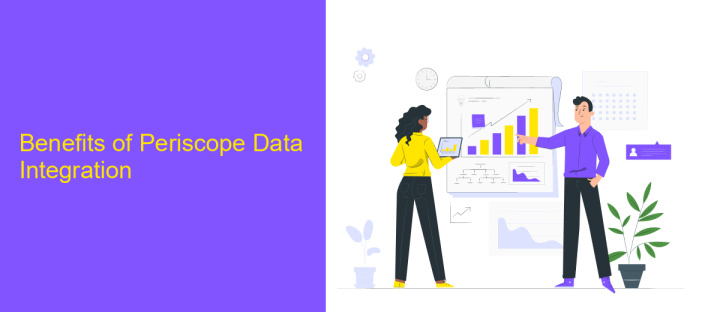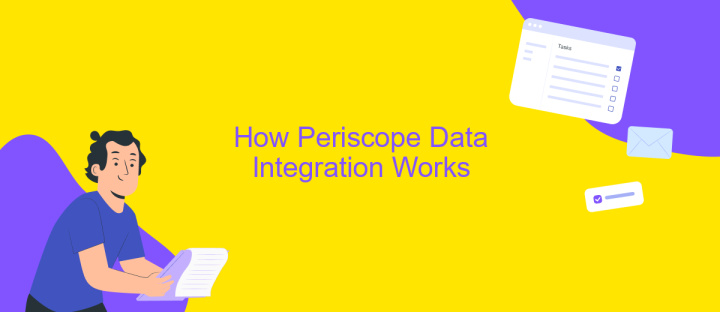Periscope Data Integration
Periscope Data Integration offers a powerful solution for businesses seeking to unify their data sources and derive actionable insights. By seamlessly connecting various databases, cloud services, and data warehouses, Periscope Data enables users to create comprehensive visualizations and reports. This integration not only enhances data accessibility and analysis but also drives informed decision-making across the organization.
Overview
Periscope Data Integration empowers businesses to harness the full potential of their data by seamlessly connecting various data sources into a unified analytics platform. This integration facilitates real-time data analysis, enabling companies to make informed decisions swiftly and accurately. By leveraging Periscope Data, organizations can transform raw data into actionable insights, driving strategic growth and operational efficiency.
- Centralized Data Management: Integrate multiple data sources into a single platform.
- Real-Time Analytics: Access up-to-date information for timely decision-making.
- Customizable Dashboards: Tailor visualizations to meet specific business needs.
- Enhanced Collaboration: Share insights and reports effortlessly across teams.
- Scalability: Adapt to growing data volumes and evolving business requirements.
With Periscope Data Integration, businesses can break down data silos and foster a data-driven culture. The platform's robust features and user-friendly interface make it an ideal choice for organizations seeking to optimize their data analytics capabilities. By integrating Periscope Data, companies can achieve greater transparency, improve performance metrics, and ultimately, gain a competitive edge in their respective industries.
Benefits of Periscope Data Integration

Integrating Periscope Data into your workflow offers numerous benefits that can significantly enhance your data analysis and business intelligence capabilities. One of the key advantages is the ability to centralize data from multiple sources into a single, cohesive platform. This centralization enables more comprehensive and accurate data analysis, leading to better-informed decision-making. Additionally, Periscope Data’s powerful visualization tools allow users to create detailed and interactive dashboards, making it easier to identify trends, patterns, and insights that might otherwise go unnoticed.
Another significant benefit is the streamlined data integration process, especially when using services like ApiX-Drive. ApiX-Drive simplifies the integration of various data sources with Periscope Data, automating data transfers and reducing the need for manual input. This not only saves time but also minimizes the risk of errors, ensuring that your data is always up-to-date and reliable. By leveraging ApiX-Drive, businesses can focus more on analyzing data and deriving actionable insights, rather than getting bogged down by the technicalities of data integration.
How Periscope Data Integration Works

Periscope Data integration allows businesses to seamlessly connect various data sources, enabling comprehensive data analysis and visualization. By integrating with databases, cloud storage, and third-party applications, Periscope Data ensures that users can access and analyze all relevant data from a single platform.
- Connect to Data Sources: Users can link Periscope Data to multiple data sources, including SQL databases, cloud services, and APIs.
- Data Extraction: Once connected, Periscope Data extracts the necessary data, ensuring it is up-to-date and accurate.
- Data Transformation: The platform then transforms the raw data into a structured format, making it easier to analyze.
- Data Visualization: Users can create custom dashboards and reports to visualize the transformed data, using various charts and graphs.
- Collaboration: Teams can share insights and collaborate on data analysis within the Periscope Data platform.
This integration process simplifies data management, allowing businesses to make informed decisions based on real-time data. By streamlining data extraction, transformation, and visualization, Periscope Data enhances the overall efficiency of data analysis workflows.
Use Cases for Periscope Data Integration

Periscope Data Integration offers numerous advantages for businesses aiming to consolidate their data analytics and visualization efforts. By integrating Periscope Data with various data sources, organizations can streamline their data workflows and enhance decision-making processes.
One of the primary use cases for Periscope Data Integration is in the realm of business intelligence. Companies can connect Periscope Data to their existing databases, cloud storage, and third-party applications to create a unified data environment. This integration enables more comprehensive and accurate reporting, which is crucial for strategic planning and operational efficiency.
- Real-time data analysis and visualization
- Enhanced reporting and dashboard creation
- Improved data governance and compliance
- Streamlined ETL (Extract, Transform, Load) processes
- Cross-functional data collaboration
Another significant use case is in predictive analytics. By leveraging Periscope Data's integration capabilities, businesses can perform advanced analytics on historical data to forecast future trends. This predictive insight is invaluable for optimizing marketing strategies, inventory management, and financial planning.
Implementation and Best Practices
Implementing Periscope Data integration involves several key steps to ensure seamless data flow and efficient analytics. First, identify the data sources you wish to connect to Periscope Data. These can include databases, cloud storage solutions, and third-party applications. Use secure connection protocols such as SSL/TLS to safeguard data transmission. Once the data sources are identified, configure the data connectors within Periscope Data, ensuring proper authentication and data mapping. Regularly update data schemas to reflect any changes in the source systems, maintaining data integrity and consistency.
Best practices for Periscope Data integration emphasize automation and monitoring. Utilize services like ApiX-Drive to automate data synchronization between Periscope Data and your various data sources. ApiX-Drive simplifies the integration process, offering pre-built connectors and a user-friendly interface. Set up automated data refresh schedules to keep your analytics up-to-date without manual intervention. Additionally, implement monitoring tools to track data flow and identify any anomalies or disruptions in real-time. Regular audits and performance tuning of your data pipelines will help optimize the integration, ensuring reliable and accurate analytics.
FAQ
What is Periscope Data Integration?
How can I automate data integration with Periscope Data?
What types of data sources can I connect to Periscope Data?
Is it possible to integrate Periscope Data with third-party applications?
How do I ensure data security during integration?
Strive to take your business to the next level, achieve your goals faster and more efficiently? Apix-Drive is your reliable assistant for these tasks. An online service and application connector will help you automate key business processes and get rid of the routine. You and your employees will free up time for important core tasks. Try Apix-Drive features for free to see the effectiveness of the online connector for yourself.

